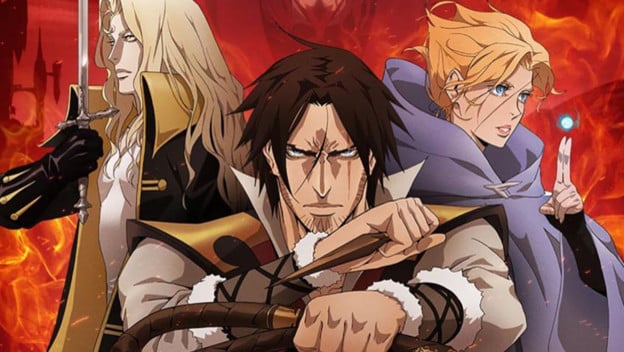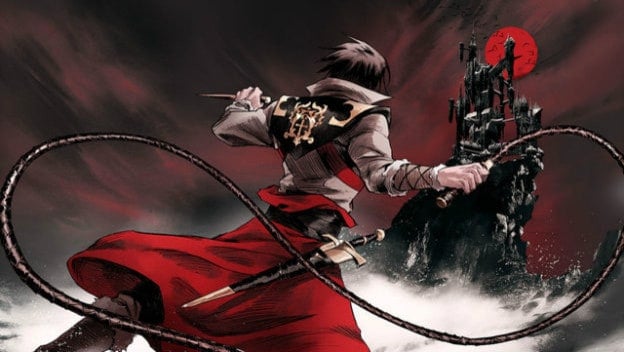On March 15, 2014, Koji Igarashi left Konami. Up to that point, his whole career in video games was with Konami, dating back to 1990. Igarashi had been known, for decades, as the guy in charge of Castlevania . While obviously not involved with the NES titles, he served in multiple capacities for Castlevania: Symphony of the Night , as assistant director, programmer, and even scenario writer. As time went on, Castlevania went to some… places.
One of those places was the Game Boy Advance in 2001, with Castlevania: Circle of the Moon . While a flawed game, it was the first “Metroidvania” entry in the series since Symphony in 1997. The subsequent series of games, from Dawn of Sorrow to Order of Ecclesia , were all excellent games, but you know how things are. They all came out close to each other, and people didn’t turn up in terms of sales. Konami needed a new direction, and a combination of Spanish developer MercurySteam and the legendary Kojima Productions introduced Lords of Shadow , a “modern” take on Castlevania .
Lords of Shadow was somewhat well-received, although it suffered, like many games of its era from Japanese publishers, from trying too hard to be like other games from western, AAA studios. It tried to be God of War , Shadow of the Colossus , and a bunch of other things all at once. It was an interesting take on the lore, with influence drawn from European folklore and classic literature, but it was still divisive among series fans. Still, it did well, pleasing the powers to be, and Igarashi seemed to all but disappear from the conversation. During this time he would act as producer on a few smaller projects, but would ultimately leave the company soon after Lords of Shadow 2 came out, which was a real disaster.
Since then, Konami seems to have given up on Castlevania , and video games for the most part, altogether. It has been a dark period indeed for such a legendary series, backed by so many years of talent. As part of the founding vehicle for the “Metroidvania,” the genre itself saw an explosion in indie games, while the OG sputtered out with a regrettable action game. But it’s not all tragedy and silence. Igarashi would re-emerge with Bloodstained , a Kickstarter-driven project that would see the man and his team revisit the original concept, in a scale not seen since the PlayStation in 1997. This was coupled with a spinoff in the style of Castlevania 3 , Curse of the Moon , which perfectly evoked the feeling of its inspiration, giving us the best of both worlds with this new brand.
Bloodstained has a lot of promise behind it. I’ve played a few demos, and it feels like a new Symphony of the Night , infused with the DNA of the later Castlevania games. It’s a mixture of RPG systems, and the newer blend of collecting various powers and techniques. But while Bloodstained keeps Castlevania alive in spirit, what about the classic series? Is it doomed to Virtual Console releases of the classics, and that bit of real estate in our hearts that will never die? Maybe not.

Of course, Castlevania has seen recent success with an anime-inspired animated series on Netflix. While the first season was barely an experiment at four 20-minute episodes that didn’t finish the story, the buzz and word of mouth led to success, and a second season with double the number of episodes. That will be coming just in time for Halloween this year, and I’m pretty stoked to see it to the end. I’m a little mixed on the first season, as while it takes to its source material in an intriguing way (primarily based on Castlevania 3 ), it’s a little up its own ass thanks to writer Warren Ellis’ insistence on everyone puking and screaming f-bombs as much as possible. It’s a bit hard to take seriously, and it lacks a bit of style as a result. Still, it’s making waves, and that’s important.
Who knows – Konami could be seeing what’s happening with the Netflix show, and seeing dollars. There’s also no doubt Konami is aware of the Bloodstained project, much like Capcom no doubt saw Mighty No. 9 and the money that made (before it crashed and burned). Konami has recently built up a lot of good will with Super Bomberman R , even including some Castlevania characters in its wide range of free DLC updates. There are people there who still respect what “Konami” means as a brand, even if the company has had to make some unfortunate choices after burning so much money on Metal Gear Solid games. Look, they’re good, but Kojima is no slouch when it comes to lighting cash on fire. Anyway, I see light at the end of the tunnel for Castlevania . Mistakes have been made, and feelings have been hurt. But the demand exists. The show is proving it. Now it’s up to Konami to make a move, and hopefully it will be a smart one.
